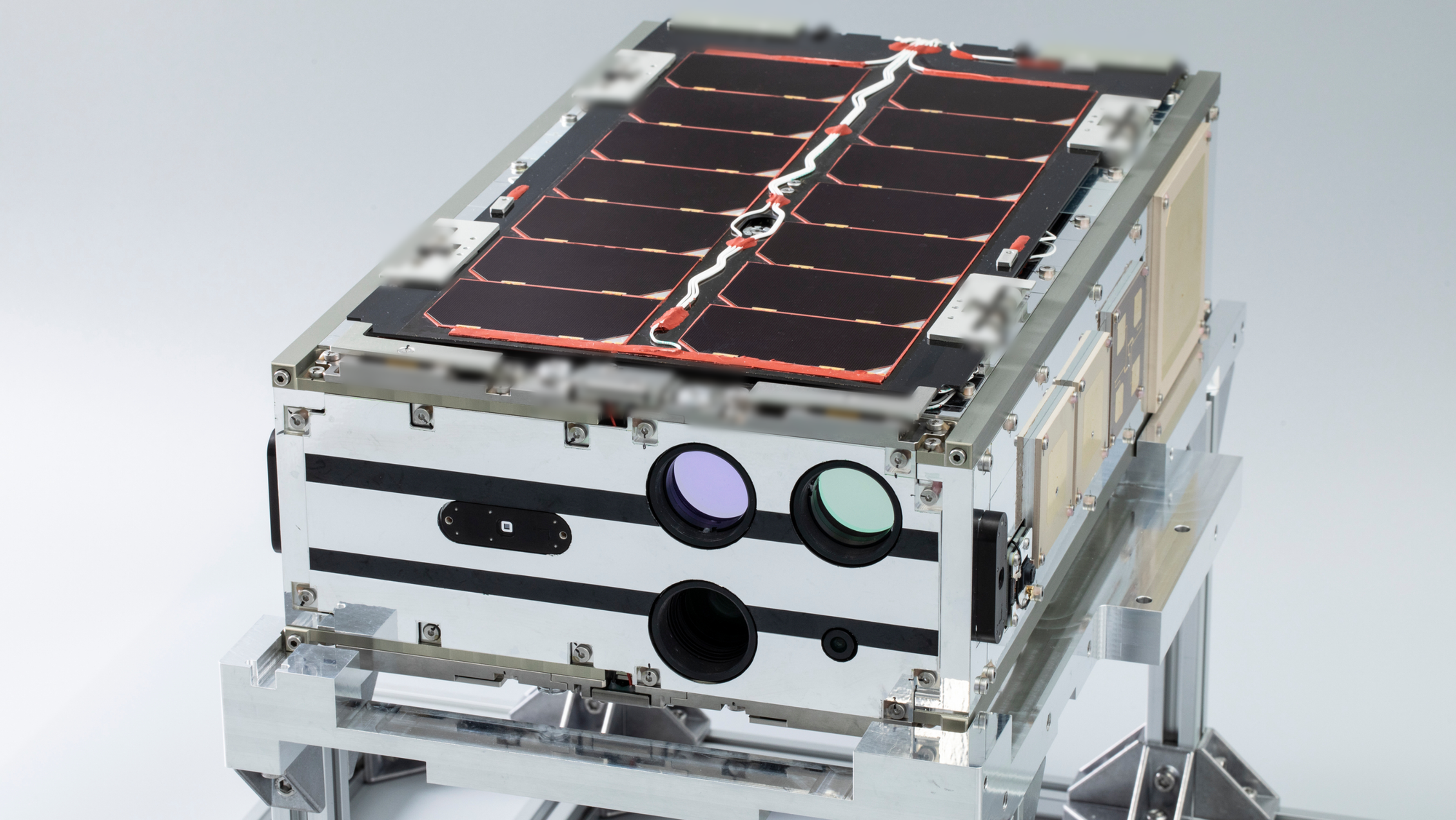Tokyo, Japan, November 1st, 2024 – ArkEdge Space Inc. (“ArkEdge Space”), a Japanese space startup based in Tokyo that provides comprehensive solutions from design, development and operation of micro-satellite constellations, is pleased to announce the completion of the design, development, and mass production testing of multi-purpose buses for the 6U satellites, which have been under development since 2021 and will now proceed to the launch and in-orbit demonstration phase.
This project was initially selected by the Ministry of Economy, Trade and Industry (METI) in 2021 and, from fiscal year of 2023 and beyond, has been funded by the New Energy and Industrial Technology Development Organization (NEDO) as part of the “Research and Development Project for Information Infrastructure Improvement for Space Industry Technology (Development and Verification Support for Multi-purpose Bus for Micro-Satellites), and “Development and Demonstration of a 6U Standard Multi-purpose Bus and its Production and Operation System for Rapid and Efficient Production of Multiple Types of Satellites.” As a result, a standard general-purpose bus system for 10kg class 6U satellites, a mass production system, and an automatic operation system for multiple satellites have been established, and a multi-purpose satellite constellation consisting of seven satellites will be demonstrated in orbit using these systems by fiscal year of 2025.
With the increase in the number of rocket launches and the affordability of launch costs, the number of satellite launches has increased 11-fold over the past 10 years, the largest ever [1]. In particular, the need for integrated multi-purpose satellite operations, known as micro-satellite constellations, is growing worldwide, and this has led to high expectations for the practical use of the 6U satellite, which can perform a wide variety of missions while achieving faster delivery and lower costs.
The multi-purpose bus system for 6U satellites developed in this project has a modularized and standardized internal structure and components, with a flexible “mission interface (MIF)” at the interface between the satellite bus (common part) and the mission part (customized part) to enable flexible design changes. By flexibly changing the mission equipment payload, which is equivalent to 3U of space, it is possible to accommodate a variety of missions according to customers’ needs while minimizing the cost and time required for satellite development.
In this in-orbit demonstration, including the “standard model” equipped with the basic functions of the 6U satellite general-purpose bus system and standard IoT communication functions, the following four models, totaling seven satellites, will be tested for their effectiveness and practicality in space as derivative models based on this basic model with mission modifications, etc.
- Standard model: a vertical mission space over 3U, which can be used for in-orbit demonstration of space components.
- Remote sensing model: a model with improved attitude control capability for satellite remote sensing that can be used for various Earth observation applications, including optical, multi-wavelength, and near-infrared observations.
- Large antenna model: equipped with a deployable antenna to support the in-orbit demonstration of VDES (VHF Data Exchange System, Maritime Communication Satellite).
- Optical communications compatible model: a model capable of performing more advanced attitude control, such as acquisition and tracking control for optical communications.

We will contribute to solving global issues and creating a sustainable space industry, including the achievement of the SDGs goals, by providing the 6U satellite platform to governments, research institutes, and private companies in Japan and overseas, exploiting the knowledge gained through this project.
[1] Source: Cabinet Office, National Space Policy Secretariat, “Perception of Space Transportation Environment and Future Vision”
(June 27, 2023), p. 3. (https://www8.cao.go.jp/space/comittee/05-yuso/yuso-dai2/siryou2.pdf)
About our 6U satellite multi-purpose bus system
- The system consists of two sections: a common section (satellite bus section) that controls the core functions of the satellite, and a mission section that can be tailored to specific missions.
- A mission interface (MIF): the internal structure and components are modularized and standardized, and it is used at the interface between the satellite bus section and the mission section to allow flexible design changes.
- Flexible modularization of the on-board components: minimizing the cost and time of satellite development and enabling a wide variety of missions according to customer requirements.
- Improved reliability and robustness: as a satellite platform, through the repeated use of a multi-purpose bus system with a proven track record in orbit for a wide variety of missions.

Upcoming Launch Schedule (as of October 2024) *subject to change
The launch schedule for micro-satellites utilizing the 6U multi-purpose bus system is as follows. Please note that this schedule is subject to change due to launch schedule and other factors.


